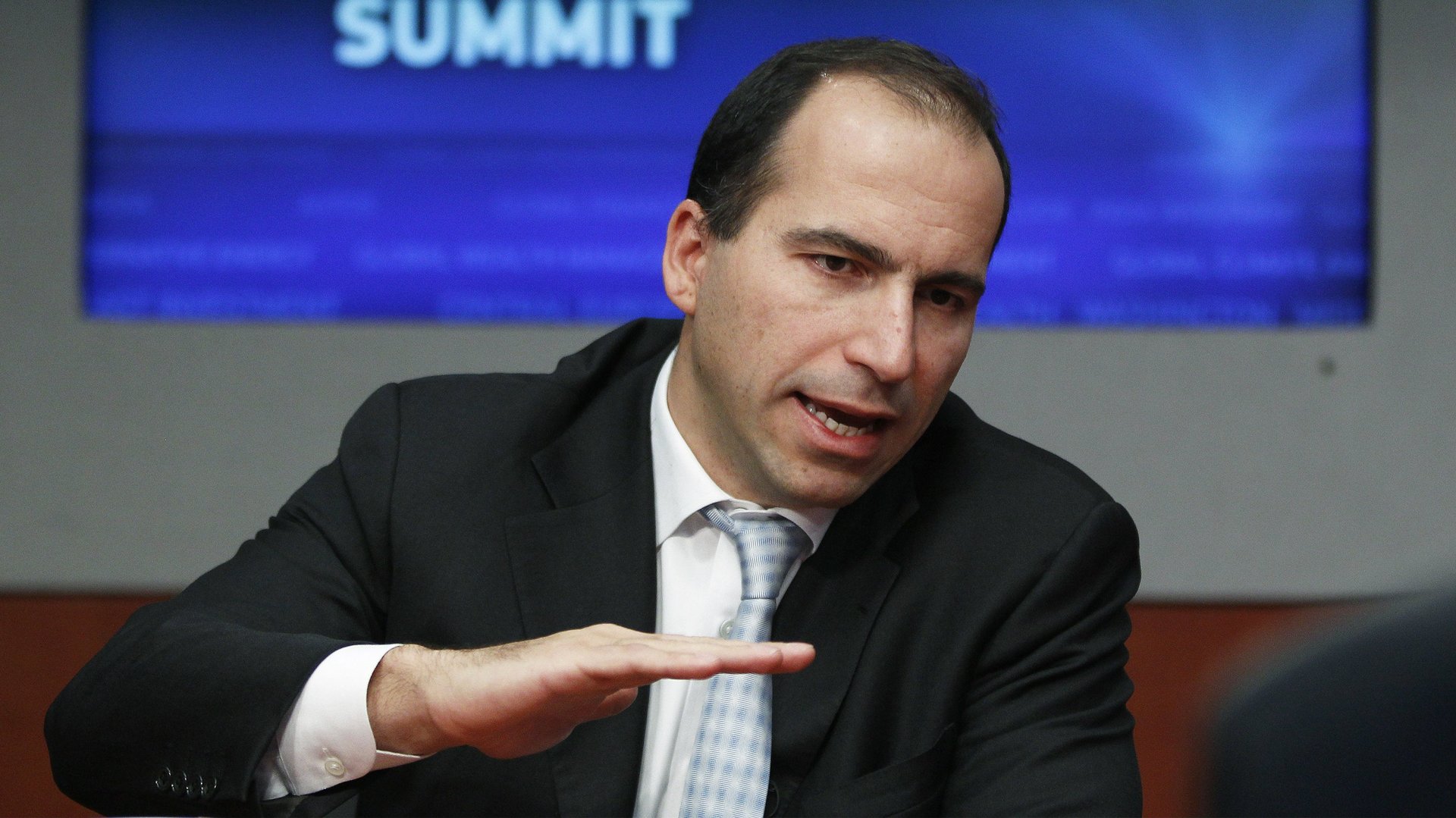Last year, Uber lost $3 billion. By 2020, it wants to IPO. Here’s what it has to solve first
Dara Khosrowshahi has only been Uber’s CEO for a few days, and he’s already pulling 180-degree turns on his predecessor, Travis Kalanick. At his first all-hands meeting, he announced that the ride-hailing company could go public in about 18 to 36 months (though he set no firm deadline). Some Uber investors likely breathed a sigh of relief, as Kalanick had famously said in March last year that Uber would delay its IPO “as late as possible.”


Dara Khosrowshahi has only been Uber’s CEO for a few days, and he’s already pulling 180-degree turns on his predecessor, Travis Kalanick. At his first all-hands meeting, he announced that the ride-hailing company could go public in about 18 to 36 months (though he set no firm deadline). Some Uber investors likely breathed a sigh of relief, as Kalanick had famously said in March last year that Uber would delay its IPO “as late as possible.”
Yet an IPO also means that Uber, which has disrupted the taxi industry worldwide since its launch in 2011, will finally have to face the music for some of the business and legal problems that have mounted up—notably, growing competition from rivals and disputes over driver pay. Here are some questions it will have to answer before its shares start trading in New York.
How can Uber reduce its losses without losing market share?
With an IPO pending, is the era of cheap Uber rides over?
Uber expanded quickly around the world by throwing discounts at customers and bonus incentives at drivers. Compounded with its already cheap prices (UberX, its flagship tier, in which drivers use their own personal cars, is typically priced at three-quarters the cost of a local taxi), these tactics have forced Uber to swallow large losses—about $3 billion in 2016 alone.
It certainly wouldn’t be the first unprofitable tech company to go public. But investors will want signs those losses are shrinking. That means cutting back on the discounts and bonuses that made it popular. To its credit, its early efforts on that front look successful—adjusted net losses fell 14% annually during the second quarter of 2017, while gross bookings doubled over the same period.
But slashing those schemes even further or—gasp—raising prices could cause Uber to lose precious market share. That’s especially true in the US, which is probably (the company hasn’t released regional revenue data) its biggest and most lucrative market. In the face of public backlashes against its surge pricing, treatment of drivers, and corporate sexism scandals, it has started to lose ground (paywall) to local rival Lyft. Khosrowshahi reportedly said that stopping this decline is the company’s most important task.
There are two ways it can do this, and neither is great. It could squeeze drivers further by taking a bigger cut of each ride, but that could make drivers quit or switch to Lyft. Or it could raise its prices, and risk losing consumers. It will have to choose.
Is it worth burning cash to compete with rivals in poor countries?
Of course, another way to reduce losses is to duck out of places where the numbers don’t add up.
One obvious candidate for an Uber retreat is Southeast Asia, where the company faces an intense battle with Singapore-based Grab (and arguably also competes with Jakarta’s Gojek, which offers motorbike rides on-demand). Soon to be armed with $2.5 billion in funding, Grab has aggressively courted drivers and riders with generous discounts (paywall). The already cheap taxi prices in most of Southeast Asia ensure that margins will remain low—perhaps so low that they’re not worth a subsidy battle.
If it’s really struggling in the US, Uber might also consider withdrawing from India, where trip prices are also low and another domestic rival, Ola, is competing for passengers. However, Ola’s recent fall in valuation suggests that Uber retains an upper hand.
A withdrawal wouldn’t be unprecedented for Uber—it sold its China business to rival Didi Chuxing and merged with domestic giant Yandex.Taxi in Russia. If investors get anxious, another such merger might be in the works.
How can Uber keep investors calm with all these lawsuits?
Uber has had tense relations with the authorities in nearly all of its cities to some degree. However, two legal battles in particular could complicate its eventual listing.
The first is a set of class-action lawsuits filed by Uber drivers in the US who argue they should be classified as employees rather than independent contractors. If they win, Uber will have to offer them benefits and set wages, which will cost it more than just giving them a percentage of each fare. The second is a lawsuit filed by Waymo, Alphabet’s self-driving car subsidiary, which alleges that Uber stole its trade secrets.
Ben James, a Hong Kong-based partner at law firm Kirkland & Ellis, says these issues likely won’t be enough to bar Uber outright from an IPO. Instead, the Securities and Exchange Commission will merely require the company to list them in its prospectus. However, he adds, if Uber goes public with the cases unresolved, they could hinder the company’s ability to raise capital. “It’s certainly in their benefit to clean up as many outstanding legal issues as they can so investors don’t factor that into the price they’re willing to pay,” he says.